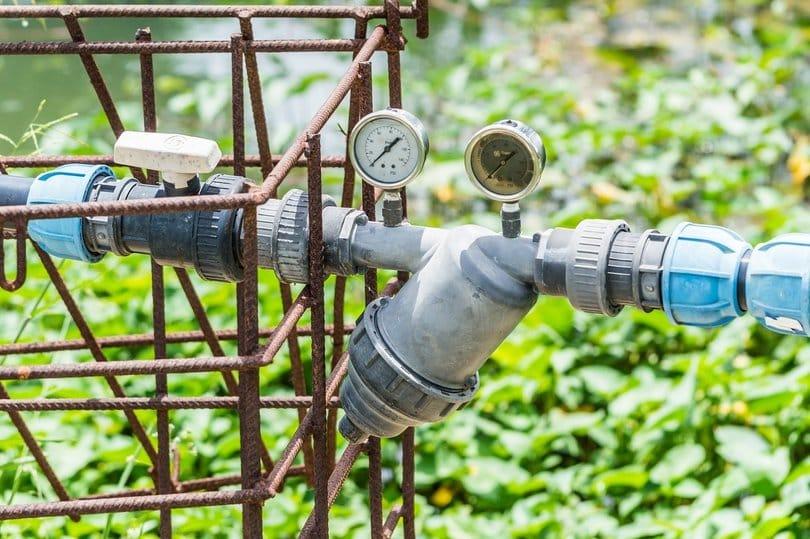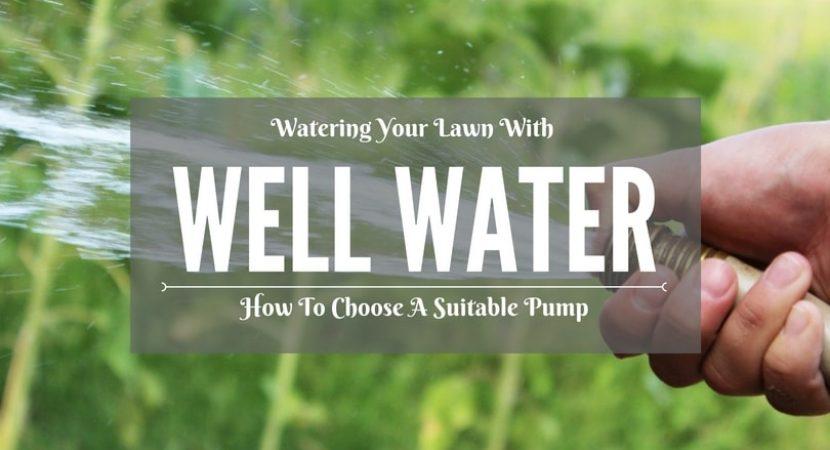If you live in an urban area, you most probably have city-supplied water. Watering your lawn simply means turning on your tap and water magically run indefinitely. On the other hand, this will leave a major hole in your pocket. On rural property, you can save costs by using well water to irrigate your lawn. However, you may have to use a pump. The type of pump that you use could end up being expensive, as it may use too much electricity and might need regular repairs. Choosing a reliable pump is, therefore, important.
Factors to consider when looking for a pump
When thinking of the kind of pump to provide you with an automatic watering system, you must consider two major factors:
- The amount of water is in the well
- The amount of water the machine can pump in Gallons Per Minute (GPM) at a functional pressure
When planning an irrigation system, you will need to coordinate these two factors. You are legally required to keep a Well Log, which will provide vital information about the response of your well to the pumping of water, the “recommended pumping rate”, the “testing rate” and other crucial data that will guide the entire irrigation process. This could help save you some money, and ensure that you will not prematurely run out of water.
Aside from a well log or report, your water well file should have copies of:
- Receipts of installation or maintenance of the pump
- Contract and receipt of well construction
- Water level measurements
- Maintenance receipts of the well
- Water quality tests results
The most effective pump for a well
The submersible well pump is considered one of the most suitable pumps that can supply enough water for a well. As the name suggests, these pumps are designed to be dipped inside water that you want to pump. You can use a garden hose attached to an adapter if you lack a traditional discharge hose.

The pumps are categorized as utility and trash pumps. Utility submersible pumps are simply used for moving water. However, if you are moving water that contains debris and other solids, you should use a trash pump. A gas-powered model is ideal if you are moving a lot of water quickly, such as when watering your lawn.
Submersible pumps have an electric pump and motor in a single unit. The pump is in the shape of a long cylinder. This enables it to fit inside an equally cylindrical well casing. Most submersible pumps are designed for upright installation in a well, but they can also be laid on their side on a riverbed or lake bottom. Priming these kinds of pump is not necessary.
There efficiency lies in the fact that they operate just by pushing the water. They, therefore, do not need to suck water. Some of the pumps sometimes need a special sleeve when installed in a well. This device forces water flowing inside the pump to overflow on top of the pump motor to cool down the motor. This prevents the pump from burning up. You should shield the power cord from accidental damage because it reached the pump through the water.
The performance of a pump will depend on the amount of water being pumped and the pressure being created. These characteristics will determine the suitability of the pump to your irrigation system and allow you maximum control of the pump’s operation. An increase in the flow of water leads to a decrease in pressure, which determines the horsepower of an electric pump.

When you intend to water your lawn using well water, you should consider quality and quantity of the water based on land use, geology and climate. You may experience supply problems when you turn on the pump and there is a sharp drop in water level to meet demand. This can damage the pump, especially if the pump is old and there is buildup of silt, mineral deposits or bacteria.
A drought can also cause water levels to drop and damage the pump. Pumps that are installed at shallow depths may not get access to all of the water, which may produce reduced yields. It is important to measure your well’s static water level. You can install a water meter to measure the amount of water you are pumping.
Conservation
Conserving water is essential to ensure the available supply is enough to serve you through the dry months. You could start by inspecting whether your supply system has any leaks and them. You can identify whether there are leaks if your pump keeps cycling on and off. You can also watch the pressure gauge when the water is not in use. You will know there is no leak if the gauge does not shift several minutes.
You may need to install a storage tank, to enable you to carry out a small continuous pumping from the well. You could then use the tank water to irrigate your lawn. However, you would need a second pump. To prevent this unnecessary expense, you would have to locate the tank more than 30 feet above the level of your lawn. This will enable you to use gravity to allow water to flow from the tank. If you are using sprinklers, you would need to place the tank at least 60 feet higher. The gravity will create enough pressure to supply a small sprinkler. In this case, you will need a larger tank, such as a 5,000 gallon- tank. The sprinkler design system will depend on the size and power of your pump.

To water your lawn efficiently from a well, you need to carry out an assessment of the irrigation system that you will use. This will rely of the type of pump to use. A submersible pump is most effective for pumping water out of a well. You need to determine the size of the pump based on the water level and the size of your lawn. If the well has plenty of debris or silt, it could affect the operation of the pump.
When considering the design of your watering system, consider how you can conserve the water supply and energy used. Using a tank and utilizing gravity can help you save the water. You can apply the force of gravity to make the water flow from the tank, and thus reduce the need for power.
Last Updated on


Reply